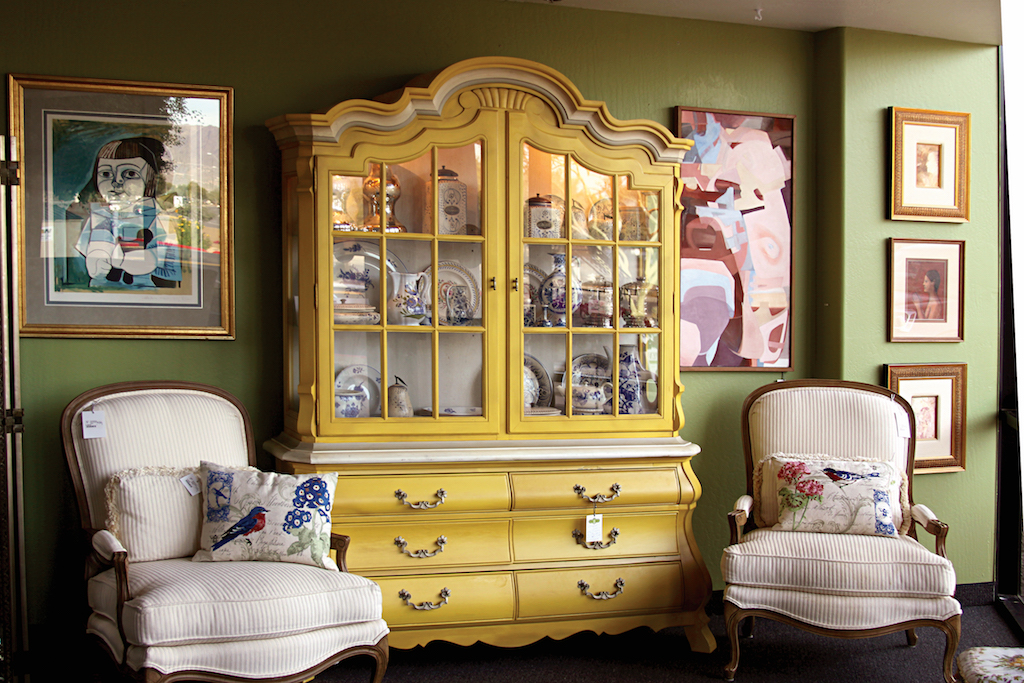
Formerly being a career woman in male-dominated industries, Richert opened up Avery Lane as a way of dabbling in her fun and creative side. Opened in 2012, Avery Lane has been popular among the Scottsdale consignment shops and known for having a quirky and different atmosphere that differs from the surrounding shops. “It’s not always the new things I want, it’s the quirky things. I want it to be a destination. I don't want it to just be a place you come and shop. It’s a lot of stuff that’s cute and clever and interesting that they wouldn't find at just a normal retail store.” Avery Lane is definitely the place to go to find a little bit of everything, ranging from a 17th-century door from a monk monastery in Spain, a game table from Capri, Italy to a console table from John Richard Designs.
“A big part of what consignment is, is a service to people.” Here are the five pro tips to get the most bang for your buck.

1) Pick the Perfect Shop to Sell Your Piece of Furniture
There are many different types of consignment shops for every different type of home and designer. Yes, you might have this amazing luxurious designer sofa that’s in perfect condition and you're desperate to get rid of it, but it is essential you take it to the correct consignment store to make sure it not only fits with the theme of the store but to make sure you make the most profit from it. As Richert says, “just because we don't think it’s cool, doesn’t mean it's not a good item, it just doesn't work for our store.” A tip from Richert is to treat every consignment shop like searching for a realtor to sell your home. “See how each store showcases the items, how they take care of the item, [get a feel for] who the sales people are.” It’s important to make sure your piece of furniture will shine at that specific store just as if you were to pick a realtor to make your home glimmers when putting it up for sale.
2) Know Your Stuff and Brag About it
Most shops will have extensive knowledge on the type of furniture coming into their store, but that doesn’t mean you shouldn’t! Having knowledge of the make and model of your piece, how much you originally paid for it and any other relevant information can help in getting the most from consigning your piece of furniture. If it’s an antique, know the year it was made and where exactly in the world it is from. Brag about your piece, the consignment shops want to hear all about it!
3) Prepare Your Piece for its Interview
The same way you get prepared for an interview is the same way you need to prepare your piece of furniture for its interview. Tighten loose knobs, make sure to clean the upholstery and polish down or dust off your piece. When you bring in a clean and polished item, you not only have better luck, but you won’t have to pay the shop some of the money you earned for them to do the cleaning for you. Having a piece that’s immediately ready to go on the showroom floor is ideal not only for the shop but also for the possible new owner of your old treasure.
4) Reupholster or Buyout
Patterns are not always the coolest thing when it comes to consigning a piece of furniture. To get more for your piece of furniture that has a funky pattern, try reupholstering it to a solid color first before taking into the shop. If that’s too much of a hassle, talk with the shop and see if they’ll consider doing a buy-out with your piece. They’ll pay you a flat fee upfront for the piece and the shop will then take it doing whatever they want to the piece. The piece is instantly off your hands and you get paid in the process.
5) The Three No-Gos
Richert gave AFM the scoop on the top three things that most consignment shops won’t take. Anything that comes from a smoker’s home is a definite no-go. Also, many items that come from a home with multiple cats will probably be a no-go as well. Many people are allergic to cats and it’s definitely risky to sell an item like a couch or rug that was from a previous home with multiple cats. The final and last no-go is bedding due to the stigma that is associated with used bedding. Many shops don’t want to take used bedding—even if it was basically brand new and only used in the guest room.
Think you have some pieces of furniture ready to sell? Snap some pictures of the piece and e-mail them to Avery Lane—or the consignment shop you feel best fits your piece—and determine if it’s the perfect fit.
